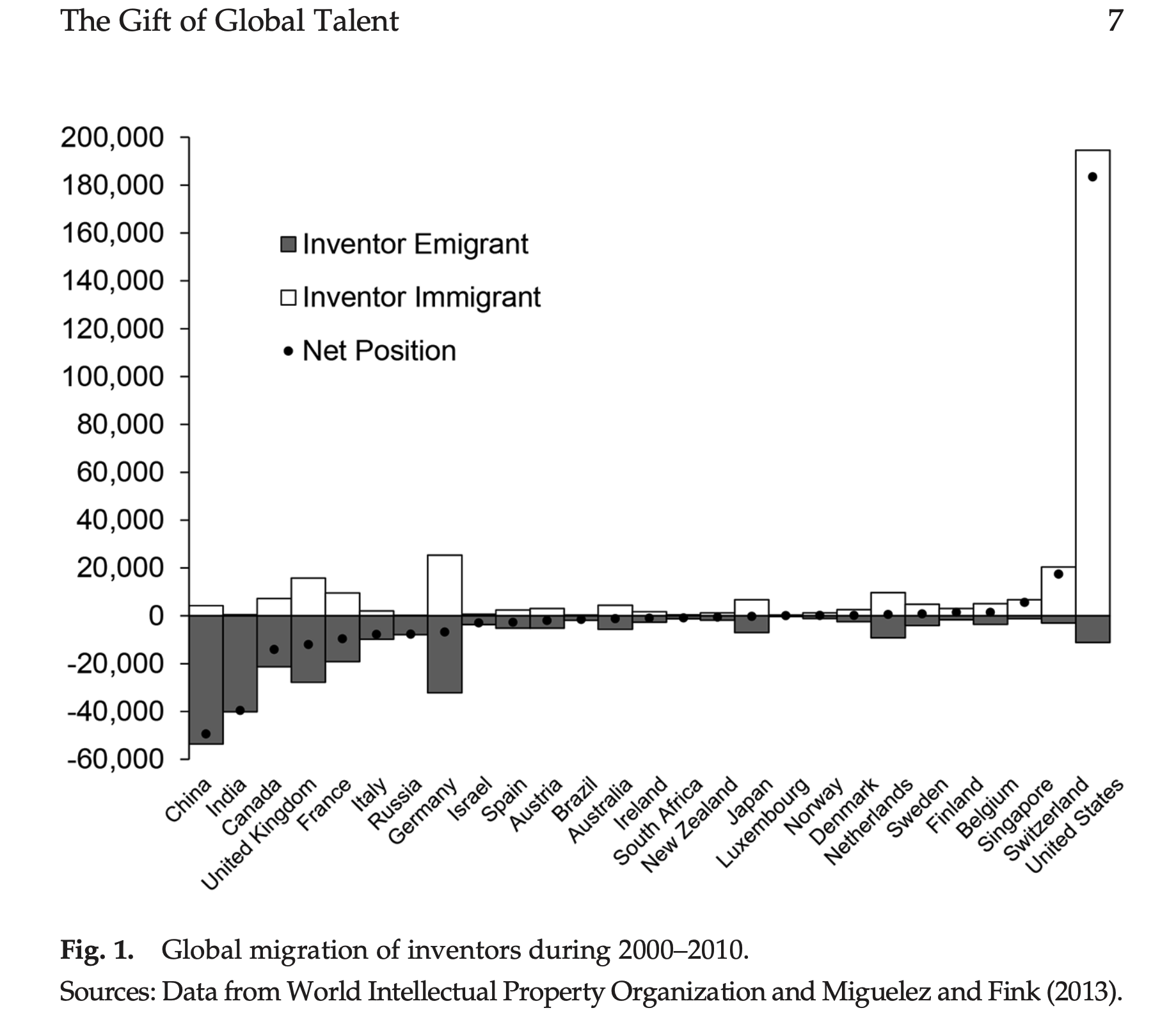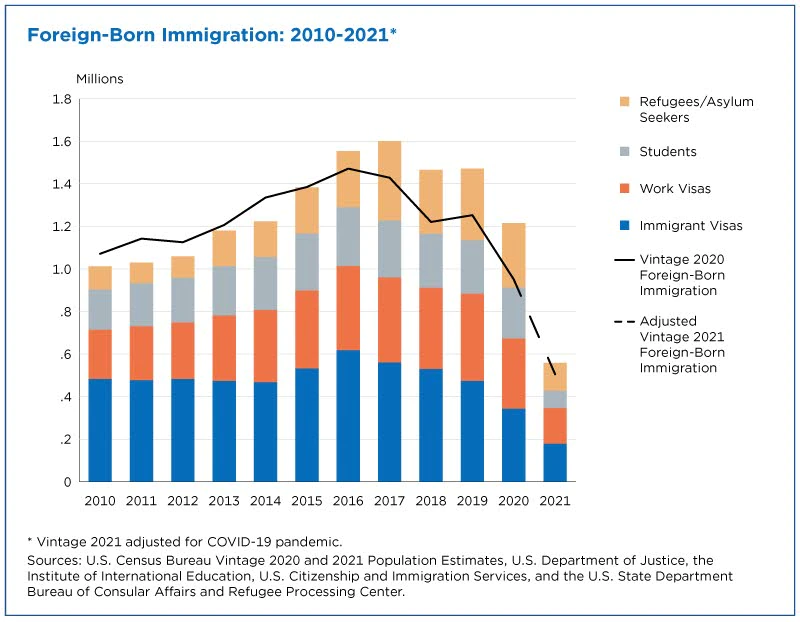US Immigration
Free movement of capital is considered paramount in policy and discourse but arguably free movement of labor is even more important. Allowing free movement of labor would approximately double global output. This is further noticeable with migration to the United States: “Migrants to the U.S. are up to six times more productive than migrants to other countries—even after accounting for talent during one’s teenage years.” – Agarwal, Ganguli, Gaule, Smith.
A paper by Doran and Yoon showed the US massively restricting immigration in the 1920s reduced patents in industries and suggests that “at least during the golden age of American invention, it was plentiful labor that made the inventions characteristic of the era worthwhile”. Programs like Operation Paperclip and The Immigration and Nationality Act of 1965 had tremendous effects, the latter removing restrictions based on country of origin, completely reshaping demographics. Even Lyndon Johnson himself didn’t quite foresee the second-order effects at the signing: “This bill that we will sign today is not a revolutionary bill. It does not affect the lives of millions. It will not reshape the structure of our daily lives, or really add importantly to either our wealth or our power.”

- Immigrants and and Nobel Prizes “Between 1901 and 2019, immigrants have been awarded 35%, or 105 of 302, of the Nobel Prizes won by Americans in Chemistry, Medicine and Physics. Since 1901, immigrants have been awarded 36% of the U.S. Nobel Prizes in Physics, 35% in Chemistry and 34% in Medicine. These numbers could be considered an underestimate, since they do not include Nobel Prize winners who immigrated to America after receiving a Nobel Prize, such as Albert Einstein, Enrico Fermi and Niels Bohr.”
- Americans end up patenting more when they’re in the presence of immigrants. “We measure the extent to which skilled immigrants increase innovation in the United States. The 2003 National Survey of College Graduates shows that immigrants patent at double the native rate, due to their disproportionately holding science and engineering degrees. Using a 1940–2000 state panel, we show that a 1 percentage point increase in immigrant college graduates’ population share increases patents per capita by 9–18 percent. Our instrument for the change in the skilled immigrant share is based on the 1940 distribution across states of immigrants from various source regions and the subsequent national increase in skilled immigration from these regions”
- Immigrants contribute heavily to innovation & entrepreneurship. Immigrants account for 25% of founders and almost 40% of founding teams have at least one immigrant, despite being ~14% of the population.

- Immigration goes beyond competition, expanding labor supply. “Immigration can expand labor supply and create greater competition for native-born workers. But immigrants may also start new firms, expanding labor demand.”
- “Overall, immigrants appear highly entrepreneurial. We see a power law in the distribution of firm size for each population, but immigrant entrepreneurship appears right-shifted. Specifically, there are more immigrant-founded firms, per immigrant in the population, at each employment size. This is true recently, where we can look at all new firms in the economy using administrative data. It is also true for firms founded in earlier time periods, including when studying the Survey of Business Owners and the Fortune 500.”
- The Contribution of High-Skilled Immigrants to Innovation in the United States. “A simple decomposition suggests that despite immigrants only making up 16% of inventors, they are responsible for 30% of aggregate US innovation since 1976, with their indirect spillover effects accounting for more than twice their direct productivity contribution.”
The US has had the potent advantage of being the primary beneficiary of migration. “Talent is the most precious resource for today’s knowledge-based economy, and a significant share of the US skilled workforce in technology fields is foreign born. The United States has long held a leading position in attracting global talent, but the gap between the United States and other countries is shrinking.” – Kerr

This is changing
“The Census Bureau estimates that the contribution of net in-ternational migration to US population growth was about 1.07 million in 2016, before falling steadily to 0.48 million by 2020. Cumulative net international migration from 2017 to 2020 has been about 2.1 million below what would have oc-curred if pre-2017 trends in annual inflows had continued(Figure 2). If we extrapolate the data into 2021, we estimate that the US population is missing about 3 million recent immigrants relative to pre-2017 trends, a large majority of whom would have been of working age.”

Please email any other relevant suggestions; particularly the counterarguments.